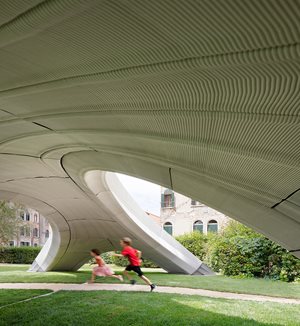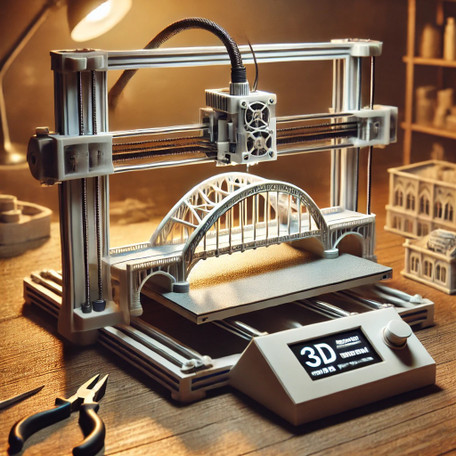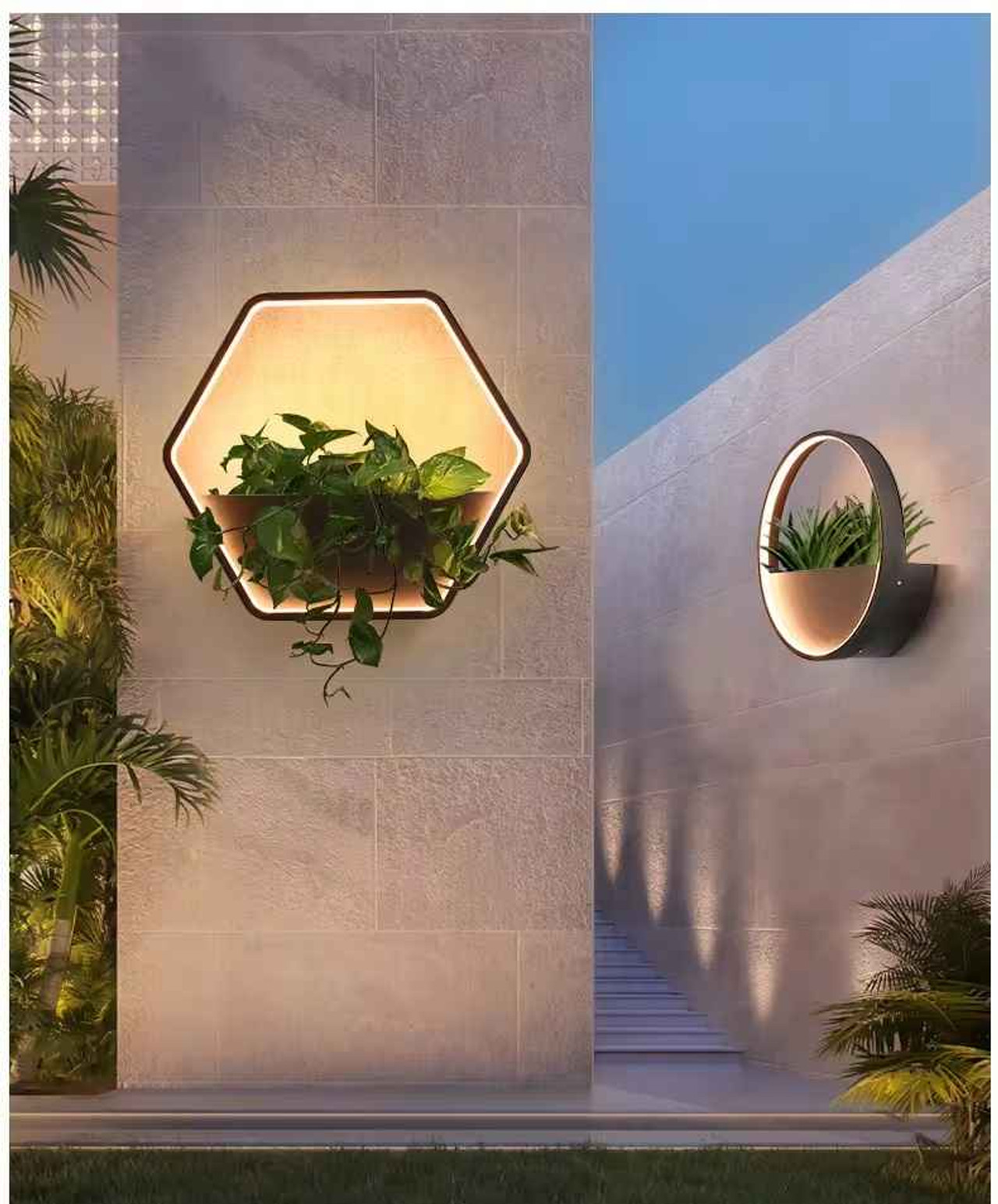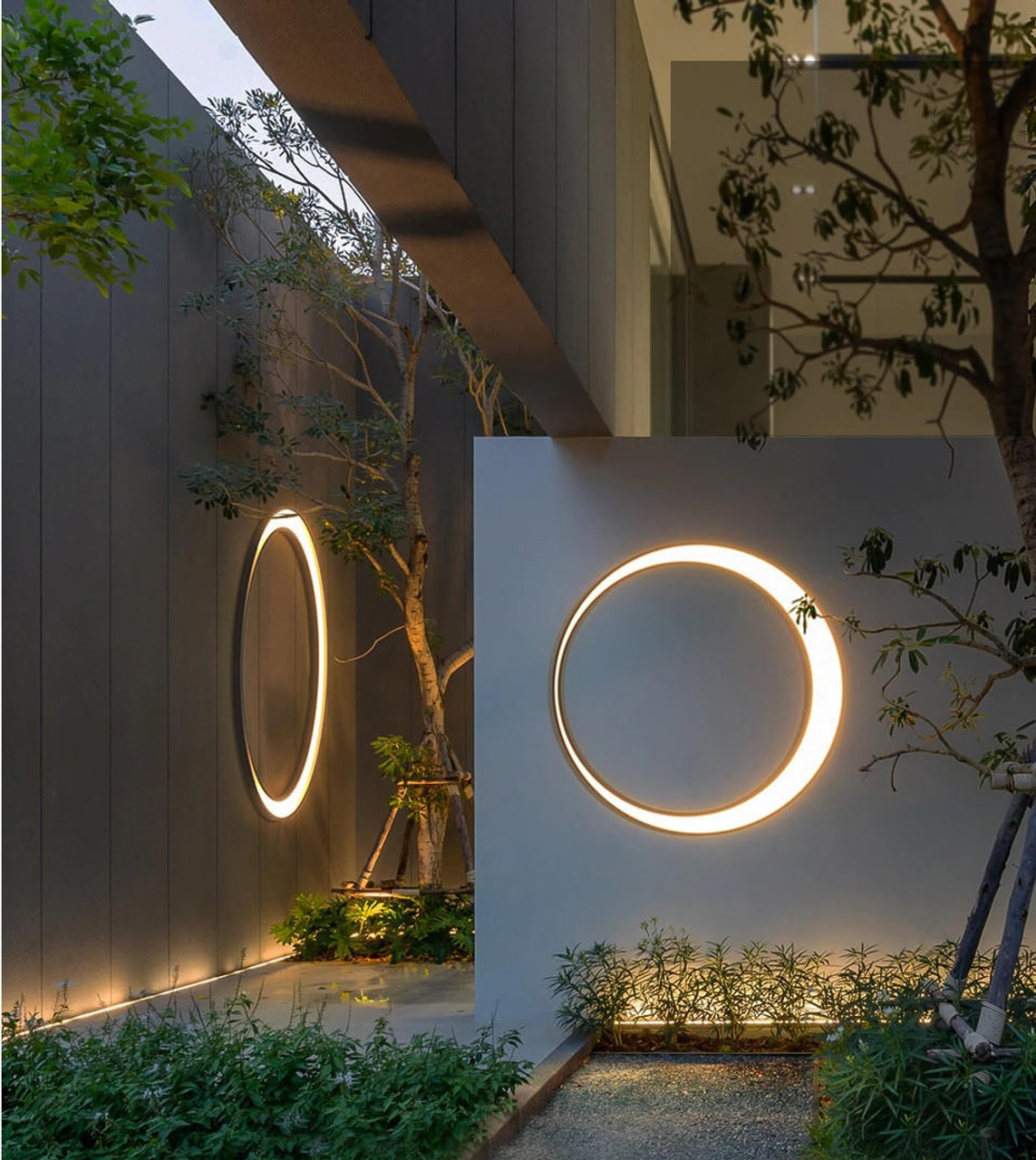Unveiling the Future of 3D Printing: The Striatus Bridge Project
Aug 02, 2024
Introduction
3D printing, or additive manufacturing, has revolutionized numerous industries by allowing for the creation of complex structures with unprecedented precision and efficiency. Among the many groundbreaking applications of this technology, the Striatus Bridge Project stands out as a pioneering achievement in the field of architecture and construction. This project not only showcases the potential of 3D printing in creating functional and aesthetically pleasing structures but also highlights its environmental and economic benefits. In this article, we delve into the Striatus Bridge Project to explore how it is shaping the future of 3D printing in construction.

The Genesis of the Striatus Bridge Project
The Striatus Bridge is a remarkable project designed by Zaha Hadid Architects in collaboration with the Block Research Group at ETH Zurich. It is the first 3D-concrete-printed bridge built entirely without reinforcement. Located in Venice, Italy, the bridge was unveiled during the 2021 Venice Architecture Biennale.
Striatus is a 16-meter-long arched footbridge composed of 53 3D-printed concrete blocks. The bridge's design utilizes traditional masonry techniques combined with advanced computational design, engineering, and robotic manufacturing technologies. The concrete is printed in layers that are orthogonal to the primary structural forces, creating a compression-only structure that does not require mortar or reinforcement.
The project emphasizes sustainability by minimizing material use and ensuring that all components can be disassembled and reused. The special concrete ink developed by Holcim for 3D printing ensures that the bridge is both durable and environmentally friendly.
Concept and Vision
The Striatus Bridge Project emerged from a collaboration between renowned architecture firm Zaha Hadid Architects, the Block Research Group at ETH Zurich, and concrete 3D printing specialist Incremental3D. The project aims to demonstrate how 3D printing technology can be used to create structurally optimized, sustainable, and visually striking infrastructure. The vision behind the project is to challenge traditional construction methods and pave the way for more efficient and eco-friendly building practices.
Design Philosophy
The design philosophy of the Striatus Bridge is deeply rooted in the principles of biomimicry and structural efficiency. Inspired by natural forms and patterns, the bridge's design leverages the unique capabilities of 3D printing to create a structure that is both lightweight and strong. The name "Striatus" itself is derived from the Latin word for "grooved" or "striated," reflecting the intricate, ribbed pattern of the bridge's surface, which is designed to enhance its structural performance.
Technological Innovations
Advanced 3D Printing Techniques
The Striatus Bridge Project employs cutting-edge 3D printing techniques to bring its ambitious design to life. Unlike traditional construction methods that rely on casting or assembling pre-fabricated components, 3D printing allows for the creation of complex geometries directly from digital models. This process involves layer-by-layer deposition of material, enabling precise control over the shape and structure of the bridge.
Use of Sustainable Materials
One of the key innovations of the Striatus Bridge Project is its use of sustainable materials. The bridge is constructed using a special type of concrete that is optimized for 3D printing. This concrete mixture incorporates recycled aggregates and other eco-friendly components, reducing the environmental impact of the construction process. Additionally, the use of 3D printing minimizes material waste, as the exact amount of material needed for the structure is deposited layer by layer.
Structural Optimization
The Striatus Bridge is a testament to the power of computational design and structural optimization. By leveraging advanced algorithms and simulation tools, the design team was able to create a bridge that is both lightweight and robust. The ribbed pattern on the bridge's surface is not merely aesthetic; it serves a critical structural function by distributing loads efficiently and enhancing the overall stability of the structure.
Environmental and Economic Benefits
Reduced Material Waste
Traditional construction methods often result in significant material waste due to the need for formwork and the inefficiencies of casting and cutting processes. In contrast, 3D printing allows for precise material deposition, significantly reducing waste. The Striatus Bridge Project demonstrates how this technology can contribute to more sustainable construction practices by minimizing the use of raw materials and reducing the carbon footprint of the building process.
Lower Construction Costs
The efficiency of 3D printing also translates into lower construction costs. By eliminating the need for formwork and reducing material waste, the Striatus Bridge Project showcases the potential for significant cost savings in construction. Additionally, the use of advanced computational design tools enables the optimization of structural components, further reducing the amount of material required and lowering overall costs.
Enhanced Durability and Longevity
The structural optimization achieved through 3D printing not only reduces material usage but also enhances the durability and longevity of the bridge. The precise control over material placement and the ability to create complex geometries result in a structure that is better able to withstand environmental stresses and loads. This increased durability translates into lower maintenance costs and a longer lifespan for the bridge.
Aesthetics and Cultural Impact
Blending Art and Engineering
The Striatus Bridge is a striking example of how 3D printing can be used to blend art and engineering seamlessly. The bridge's intricate, ribbed design is not only functional but also visually captivating. This aesthetic appeal is a testament to the creative potential of 3D printing, allowing architects and designers to push the boundaries of what is possible in construction.
Inspiring Future Generations
Projects like the Striatus Bridge have the power to inspire future generations of architects, engineers, and designers. By showcasing the potential of 3D printing in construction, the project encourages innovation and exploration in the field. It serves as a reminder that the intersection of technology and creativity can lead to groundbreaking advancements that have a lasting impact on our built environment.
Challenges and Future Directions
Overcoming Technical Hurdles
While the Striatus Bridge Project represents a significant leap forward in the application of 3D printing in construction, it also highlights several technical challenges that must be addressed. These include the development of more advanced materials, the improvement of 3D printing hardware, and the refinement of computational design tools. Addressing these challenges will be critical to the widespread adoption of 3D printing in construction.
Scaling Up
Another major challenge is scaling up the technology for larger and more complex projects. While the Striatus Bridge demonstrates the feasibility of 3D printing for small to medium-sized structures, scaling up to larger infrastructure projects will require further advancements in both technology and design methodologies. The development of larger 3D printers and more robust materials will be essential for this next step.
Regulatory and Safety Considerations
As with any new technology, the widespread adoption of 3D printing in construction will require the establishment of new regulatory frameworks and safety standards. Ensuring that 3D printed structures meet the necessary safety and performance requirements will be crucial for gaining acceptance from industry stakeholders and regulatory bodies.
The Broader Implications of the Striatus Bridge Project
Transforming the Construction Industry
The Striatus Bridge Project has the potential to transform the construction industry by demonstrating the benefits of 3D printing. These benefits include reduced material waste, lower construction costs, enhanced durability, and the ability to create complex, optimized structures. As more projects like Striatus are realized, the construction industry is likely to see a shift towards more sustainable and efficient building practices.
Promoting Sustainable Development
Sustainable development is a key goal for many industries, and construction is no exception. The Striatus Bridge Project highlights how 3D printing can contribute to this goal by reducing material waste, minimizing environmental impact, and promoting the use of eco-friendly materials. As the technology continues to evolve, it has the potential to play a significant role in the development of sustainable infrastructure.
Inspiring Innovation Across Disciplines
The success of the Striatus Bridge Project is a testament to the power of collaboration and innovation across disciplines. By bringing together experts in architecture, engineering, and 3D printing, the project demonstrates how interdisciplinary collaboration can lead to groundbreaking advancements. This approach can serve as a model for other industries looking to leverage new technologies to solve complex challenges.
Conclusion
The Striatus Bridge Project is a pioneering achievement that showcases the transformative potential of 3D printing in construction. By leveraging advanced technologies and sustainable materials, the project demonstrates how 3D printing can be used to create structurally optimized, aesthetically pleasing, and environmentally friendly infrastructure. As the construction industry continues to evolve, projects like Striatus will play a crucial role in shaping the future of building practices, promoting sustainability, and inspiring innovation. The Striatus Bridge stands as a symbol of what is possible when technology, creativity, and collaboration come together to push the boundaries of what we can achieve in the built environment.



